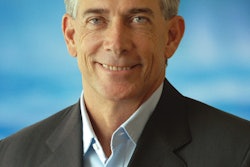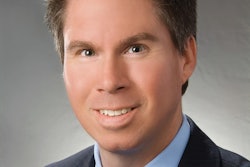
The glow surrounding networking events draws many young professionals like a bug light. The opportunity to meet and understand how others were successful is important for their self-development. It’s an opportunity to gather as many tips for success as possible. The tips are rarely implemented once young professionals leave the networking event, however, as the energy from the event is zapped away in a few days by reality. Few people hold themselves accountable to the goals they set. They’re not thinking holistically, especially with how their job intertwines with their life.
So what can be done? Kate Vitasek sat down to reflect on this and brainstorm with one of her longtime protégés, Joe Tillman, a senior researcher for SC Visions—after speaking at a recent Council of Supply Chain Management Professionals (CSCMP) conference, which was attended by 100-plus student assistants, as well as supply chain professionals.
Kate asked Joe: “So what are things I’ve done as a mentor that you can now pass on to some of these hopeful students who are now starting their career?” His answer? “You’ve set up the perfect environment for me to be accountable to myself.” I pressed: “But how did I create that environment?” His answer: “Vested. I’m vested in my own success.”
Think about it. Young professionals today need to be vested in themselves. Some likely think this is a far-fetched approach. Others may claim it to be a paradigm shift. As Joe and I sat down to discuss this topic, we began to write down how I’ve helped him follow the five rules of being vested in both his professional and personal life.
Vested—A Mindset
In my books on being vested (Vested: How P&G, McDonald’s and Microsoft Are Redefining Winning in Business Relationships; Vested Outsourcing: Five Rules That Will Transform Outsourcing and The Vested Outsourcing Manual: A Guide for Creating Successful Business and Outsourcing Agreements), I write that any vested relationship flourishes best in a culture in which participants work together to ensure their mutual success. In its simplest form, being vested is a mindset in which two or more parties build on each other’s strengths to create and develop something better. In the case of mentoring, that something better is to help a young professional grow and prosper. In the case of my mentoring relationship with Joe, I definitely was vested in his success because he worked for me at the consulting firm I founded—SC Visions.
As I write in my books and teach in my courses, being vested has five rules that—when applied—drive innovation and create value for the parties involved. Following the methodology drives radical focus and accountability on a vision, and delivering results against it. While it was designed to help companies structure outsourcing relationships, Joe’s success in applying the rules reminds me that the five simple rules apply to personal lives as well. Instead of getting radical results on outsourcing, the mission concentrates on driving protégés to be vested in themselves and having a radical focus on accountability of their own personal performance against their own vision of what they want to do with their life.
The rest of this article focuses on each of the five rules of being vested, and how Joe and I created an environment to best set him up for success in his new career at SC Visions almost eight years ago when I first started mentoring him. I recruited Joe to help write this article. Our approach is a “his and hers” viewpoint—with me speaking from the voice of the mentor and Joe speaking from the voice of the mentee. We hope our insights provide some insight on how to get the most of your mentoring relationships—regardless of the role you play.
Rule 1: Focus on Outcomes, Not Transactions
The first rule of being vested shifts focus from figuring out all of the transactions (activities) that need to take place to the results we want to achieve.
Kate: When I first became Joe's mentor (he was working for me part-time and was still a graduate student), I encouraged him to develop a vision for his life. I told him, "Joe, when you graduate, you will spend 40 to 50 hours a week in your job. Are you just going to show up and do work in exchange for a fixed dollar per hour, or are you going to work with a purpose to help you achieve your goals?"
Joe: I worked with several companies, such as Walmart and Union Pacific, before joining SC Visions in 2006. I was accustomed to people showing up all day and making good money, but they would just kind of check in when showing up for work and check out when they left. I didn’t feel fulfilled by the work I was doing because I couldn’t see where it was leading. When I started working with Kate, it became obvious I needed to understand why I do the things I do. It required knowing what my purpose was and having a vision for my life.
Kate: A good example of how Joe applies this as he works for SC Visions is he purposely finds projects that can help him realize his vision. He often searches for pet projects for which he goes above and beyond, and volunteers his time because it helps him do things to reach his vision.
Rule 2: Focus on the What, Not the How
Under a vested agreement, the buyer specifies “what” it wants. It then becomes the provider’s responsibility for determining “how” it gets done. Not mandating how work is to get done (assuming regulatory compliance and other quality levels are met) opens the door for creativity.
Kate: I was never one to micro-manage the folks I work with—even young professionals like Joe. My focus was to create an environment that would allow Joe to do meaningful work, which would not only benefit SC Visions and our clients, but also benefit Joe. We’d sit down and create desired outcomes—the results we wanted to achieve for a particular project on which Joe was working. Then I would encourage Joe to own the creation of how he would achieve the success.
Joe: I love to figure out and understand people, so for me, this is where I get to have fun. I get to work on projects that help move SC Visions closer to its goals while working in a way that helps me achieve my goals. One of the hardest things for me to “get” was how to take the time and really listen, and then feel empowered to participate in defining what success looked like. In previous jobs, my bosses would simply tell me how to do something, assuming I was the new kid on the block. Kate is really good at setting a vision and getting me excited about it. When I can take that and turn it into something specific, with little guidance from her, I feel empowered.
Rule 3: Clearly Define and Measure Desired Outcomes
All parties must be explicit in defining the outcomes they want. These outcomes are expressed in terms of a limited set—ideally, no more than five—of high-level metrics. Organizations should spend the time, collaboratively, to establish explicit definitions for how relationship success is measured.
Kate: I challenged Joe to ask the question, “How do you know you are successful?” Was his success just about making money? Or was there more to how he defined success? I challenged Joe to write down his personal vision for himself, and then create a personal scorecard that tracked his success against clearly defined and measurable goals that were important to him.
Joe: At first, this concept of defining my future success seemed very awkward. Wasn’t my job to show up and just do the job? I really didn’t have a clue as to what I was trying to achieve. I had tips and ideas on what to do, but no path to really follow. Kate shared her personal scorecard (she calls it the Balanced Scorecard for Life) and challenged me to come up with my own version. My Balanced Scorecard for Life focuses on those areas of my life that are important and allow me to live out my vision: Get a tattoo at 95! My life areas are Live Wealthy, Balance Lifestyle, Live Healthy, Have Fun, Love and Be Loved (family focused), Career/Business and Contribute to Society. Each life area has individual goals. Some are easy to measure (how much money I make) and others harder to measure (guide my kids into a life they want to live).
Rule 4: Implement a Pricing Model with Incentives
A vested pricing model is structured around two things: shared risk and reward. It also focuses on a long-term, not a short-term, view.
Kate: I always encouraged Joe to have a long-term view of how he thinks about money. All too often young professionals take the short-term view, following jobs they hate but that pay well. As the owner of a small boutique consulting firm, I could not offer Joe the same level of salary and benefits that he could have likely gotten at other companies. But what I could offer him was a place where he would be rewarded when he did succeed, as well as an environment where it would be safe for him to take risks to grow and learn.
Joe: I knew working with Kate would not be a pot of gold at the end of the rainbow. She offered something I couldn’t get anywhere else: flexibility and intangible incentives. First, I’m able to live and work anywhere I want, when I want. I choose my schedule, which allows me to focus on other things, such as pet projects and family. Kate also provides intangible incentives by supporting me to devote time in leadership roles at the Warehousing Education and Research Council? (WERC) and CSCMP, and developing soft skills, such as speaking and writing. For example, I’m a co-author of WERC’s DC Measures Study, which I volunteer to do. SC Visions does not make money on the study, but it does cover costs and helps me grow personally and professionally. Also, Kate supports me in becoming a better speaker, and to share my expertise through WERCouncil events and writing articles.
Rule 5: Govern by Insight vs. Oversight
In an effective vested partnership, a company contracts with service providers that are real experts. Such partnerships should be managed to create a culture of insight, not layers of supervisory oversight. A common mistake is for companies to micro-manage their suppliers.
Kate: I think this is likely the best tip I can give for anyone—especially a boss—who is trying to develop a protégé. Don’t micro-manage! Think about it. Do you, as the boss, like to be micro-managed? Rather, you should seek to create a regular cadence for coaching and mentoring your protégé. And use tools and processes that drive insight.
Joe: Kate and I have regular reviews in which we discuss issues we’re having and to create a plan of action for improvement, especially on those goals I named in my Balance Scorecard for Life. In many instances, Kate achieved similar goals to the ones I set and her advice on how to close the gaps on my own performance for those goals is extremely helpful. Most importantly, Kate taught me to put in the processes to help me manage myself. As Kate moves from SC Visions to focus more on vested, I know our mentoring relationship will sustain. The bottom line for me is that following the five rules of being vested created an environment in which I am vested in my success and that is a lesson I hope every young professional seeks.
Developing and sustaining a mentoring relationship is a rewarding experience. It can also help a young professional blossom as a future leader in the profession. We hope this article provides a framework to help you get the most of your mentor/mentee relationship.













